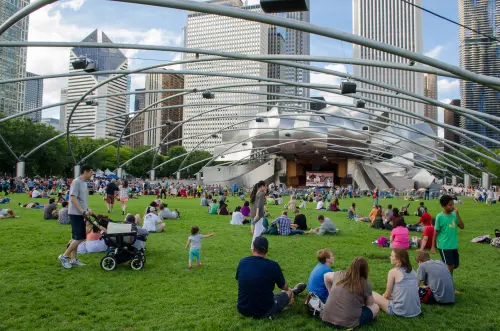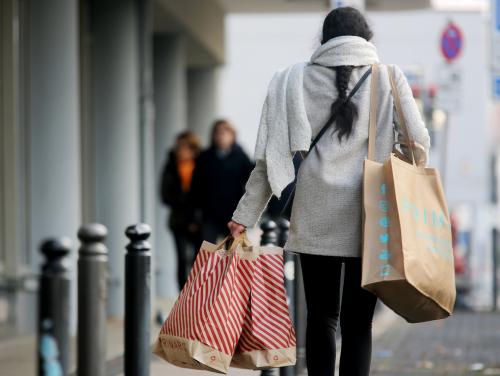In the United States, as in many other countries, a battle has been unfolding between those who want to save lives and those who want to save livelihoods. Those who want to save livelihoods argue that the economic downturn is so massive that it is not only impacting the health of the economy but also health on a broader scale. As people lose health insurance, suffer growing anxieties, and face the risk of contracting the virus, a balance that optimizes the people’s well-being is difficult to attain. In uncertain times like these, granular data that provide accurate information on what is unfolding around the world are especially useful.
World Data Lab can now share consumer spending projections for all U.S. states and counties up until 2032 using MarketPro. This is done using a novel survey-based imputation approach, county-level population projections and a Bayesian-model-averaging growth model with spatial effects.
The United States is special as it has a disproportionate share of people who spend more than $110 per day (in 2011 purchasing power adjusted dollars)—a commonly used international threshold for being considered “rich.” Even though the number of affluent Americans has shrunk by more than 12 percent since the coronavirus outbreak, there are still more than 100 million Americans who spend at least $110 a day. Americans make up more than half of the 200 million rich people in the world. This group will spend approximately $7.2 trillion in 2020 and $9.6 trillion in 2030, representing by far the world’s largest spending segment.
Where do America’s rich live?
The economies of the biggest U.S. states match those of the biggest countries in the world. The rich population of California, Texas, New York, Florida, and Pennsylvania (36.8 million) outnumber that of Japan, the United Kingdom, Germany, China, India, and Canada combined. Around half (53 million) of America’s rich are concentrated in 10 states: California (12.8 million), Texas (7 million), New York (6.4 million), Florida (6.2 million), Pennsylvania (4.4 million), Illinois (3.6 million), New Jersey (3.4 million), North Carolina (3 million), Ohio (3 million), and Georgia (3 million). The rich population in these 10 states, which are among the most populated states in the country, hold more than $3.6 trillion in spending power per year, around 30 percent of total U.S. spending power. On average, a rich individual in each of these 10 states consumes over $69,000 per year.
Rich individuals tend to congregate in metropolitan areas. Los Angeles County, Maricopa County, Cook County, San Diego County, and Harris County have the greatest number of rich people and all include major metropolitan areas—Los Angeles, Phoenix, Chicago, San Diego, and Houston.
However, many of the richest counties are in low density areas in the Northeast, especially in New Hampshire, Vermont, Massachusetts, and Connecticut, as well as Colorado and Wyoming in the West (see map). More than 40 percent of the population in these states spends $100+ per day. By 2030, this is projected to be 50 percent, with New Hampshire and Connecticut likely to be the first two states to cross the 50 percent threshold.
Map 1. The richest people live in cities, but many of the richest counties tend to be rural
 Source: World Data Lab projections
Source: World Data Lab projections
COVID-19 will hurt America’s rich, but their long-term prospects remain positive
Based on our COVID-adjusted projections, America’s rich will have a daily spending power of $19.8 billion by the end of 2020, averaging $194 per day per person. This is a $3.5 billion decrease from 2019, making rich Americans the spending segment that will see the greatest COVID-caused decline worldwide.
But relative to other spending groups in the U.S., the rich are projected to be the fastest-growing segment over the next decade. Specifically, the rich segment is projected to increase by 28 percent in population and 33 percent in spending power by 2030. The daily spending power of America’s rich is projected to grow to $26.4 billion, averaging $201 per day per person.
According to our most recent COVID-19 adjusted projections, states in the Pacific West and Plains regions are expected to see the largest increase in the rich segment over the next decade. From 2020 to 2030, the states experiencing the largest growth in rich headcount are North Dakota (54 percent), Utah (50 percent), Texas (49 percent), District of Columbia (43 percent), and Colorado (43 percent).
COVID-19 notwithstanding, expect a large increase in spending power in these states. Of all states and the District of Columbia, the places projected to experience the largest growth in spending power by 2030 are North Dakota (42 percent), District of Columbia (38 percent), Utah (35 percent), Texas (34 percent) and Colorado (34 percent) (see Map 2).
Map 2. Wealthy populations are expected to grow the most in Pacific West and Plains regions
 Source: World Data Lab projections
Source: World Data Lab projections
The coronavirus crisis is affecting businesses and financial institutions, and it may have a long-lasting impact on the American economy, especially if COVID-19 cases continue to increase. Business owners have to find novel ways to make and sell goods and services, consumer spending will shift, and there will be changes in where America’s richest individuals live. Monitoring these changes over the next decade using granular data will provide critical metrics for informing their decisionmaking process, as well as that of governments.
Note: For questions on the data model and the actual datasets please contact Thomas Mitterling ([email protected]).










Commentary
How is COVID-19 affecting America’s rich?
July 28, 2020